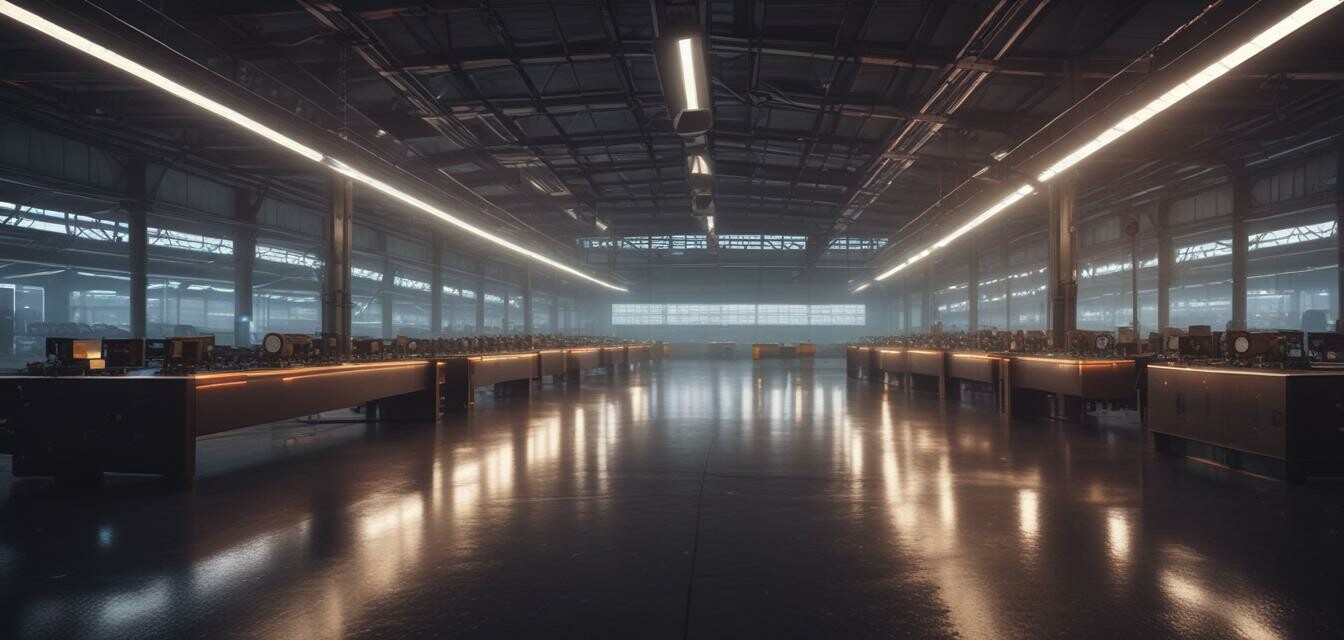
The Future of Industrial Lighting
Key Takeaways
- Innovations in LED and smart lighting are transforming industrial spaces.
- Sustainability initiatives are leading the way in product development.
- The integration of IoT technology enhances efficiency and safety.
- Understanding emerging regulations helps electricians stay compliant.
- Investment in new technologies leads to long-term cost savings for industries.
As we move into a future defined by technological innovation, industrial lighting is undergoing a significant transformation. Electricians need to stay informed about upcoming trends and advancements that could revolutionize their workspaces. This article discusses the latest technologies, sustainability efforts, and regulations shaping the future of industrial lighting.
Emerging Technologies in Industrial Lighting
The industrial lighting landscape is rapidly changing thanks to the advent of new technologies. Below are some key advancements impacting the industry:
| Technology | Description |
|---|---|
| LED Lighting | Energy-efficient lighting options with a longer lifespan. They also reduce maintenance costs. |
| Smart Lighting | Automated lighting systems that adjust based on occupancy, daylight levels, and more. |
| IoT Integration | Connection of lighting to internet systems for enhanced monitoring and control. |
| Wireless Solutions | Elimination of wiring complications with reliable wireless communication protocols. |
Sustainability Efforts in Industrial Lighting
With growing awareness of the environmental impact of industrial operations, sustainability is becoming a central focus. Electricians and industry leaders are adopting sustainable practices that not only benefit the environment but also improve operational efficiency.
Key Sustainable Practices
- Using renewable energy sources to power lighting systems.
- Implementing energy management systems to monitor and optimize light usage.
- Adopting materials and fixtures that are recyclable and environmentally friendly.
- Integrating daylight harvesting systems to reduce reliance on artificial lighting.
These practices are not just ethical choices; they make financial sense in the long run. For more information on sustainable practices, you can check our Buying Guides.
Understanding Emerging Regulations
As industrial lighting technologies evolve, so do the regulations governing their use. Electricians must remain compliant with local and national safety standards to ensure proper installation and operation of lighting systems.
Important Regulations to Note
- Energy Efficiency Standards: Ensure all lighting meets efficiency laws.
- Safety Codes: Familiarize with codes ensuring secure and healthy work environments.
- Environmental Legislation: Stay updated on laws that influence product sourcing and waste management.
For more details on safety equipment and regulations, check out our section on Smoke Detectors & Safety Equipment.
The Role of Electricians in Embracing Change
As technology progresses, electricians have a vital role to play in ensuring that new systems are implemented effectively. Training and continuing education become crucial as tools and techniques evolve.
Tips for Electricians Adapting to New Technologies
- Regularly attend workshops and webinars focused on emerging technologies.
- Seek manufacturers' certifications and training programs for new products.
- Network with other professionals to share knowledge about best practices.
Future Investment Trends
Industries are increasingly recognizing the importance of investment in advanced lighting technologies. Adopting innovative systems not only helps in achieving sustainability goals but also leads to substantial cost savings over time. Here’s how:
| Investment Area | Benefits |
|---|---|
| LED Technology | Lower energy costs and reduced replacement frequency. |
| Smart Systems | Enhanced control and efficiency, leading to operational savings. |
| Cloud-Based Management | Remote monitoring and improved troubleshooting capabilities. |
| Training and Certification | Up-to-date skills to handle modern lighting challenges. |
As electricians dive deeper into the future, investing time and resources is essential. To align with industry trends, explore the latest tools and accessory kits available in our collection. Visit our Tools & Accessory Kits page for more information.
Conclusion
In conclusion, the future of industrial lighting is bright, fueled by innovation and sustainability. Electricians must stay ahead of these trends by embracing new technologies and practices that not only enhance safety and efficiency but also contribute to environmental preservation. By investing time in education and solutions, they can navigate this evolving landscape effectively.
To stay updated with the latest developments in the electrician supplies industry, make sure to follow our blog section on News & Trends.